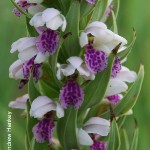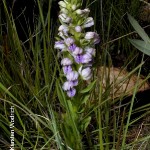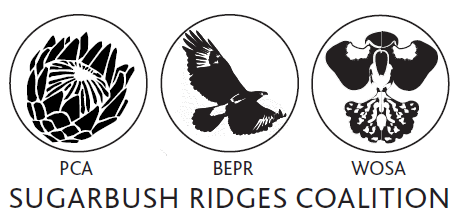Brachycorythis conica subsp. transvaalensis
Description
Slender to fairly robust terrestrial, growing up to 400 mm tall. Leaves cauline, numerous, densely overlapping, spear-shaped to narrowly egg-shaped, up to 60 x 20 mm. Inflorescence dense, up to 150 mm long and carrying 30-40 flowers, which are mauve to pink and white, lip mauve with purple spots. Flowers extremely variable from plant to plant. Spur curving, up to 8 mm long. Has recently been given the common name: the Albertina Sisulu Orchid.
Distribution in South Africa
Endemic and currently restricted to one viable colony near Krugersdorp with a limited number of plants recently found in the Witbank area. This is the only subspecies occurring in the region.
Please submit your orchid photographs to OrchidMAP as citizen science records to improve this map.
Register on the Virtual Museum or login.
Typical habitat
Extremely rare in open grassland at 1800 m.
Flowering Period
This species typically flowers between January and April.
Distribution elsewhere in Africa
Brachycorythis conica ssp. longilabris is found in Zaire and Zambia.
Brachycorythis conica ssp. conica is found in Nigeria, Gabon and Zaire.
Conservation Status
Very rare and isolated. This species was rediscovered in 2007 after not being recorded since 1956. The species used to be fairly common but all the original locations and most of its habitat has been destroyed by property development. The current population is under threat by property developers. Legal action has been ongoing to prevent the last viable colony from being destroyed. Critically Endangered.
Click on the distribution map to see the latest conservation status also refer to Provincial Species List on this site for Provincial Red and Orange listing and SANBI Orchid red list.
All orchids are protected under CITES regulations.
References and additional information
Johnson, S.D., Bytebier, B. Stärker, H. (2010). Orchids of South Africa: A field guide. Struik Nature, Cape Town, South Africa.
La Croix, I.F. la Croix, E. (1997). African Orchids in the Wild and in Cultivation. Timber Press, Portland, Oregon, USA.
This genus and species article was written by Duncan Mc Farlane and published 2019-06-15.
Proof-read and published by Karsten Wodrich.
Images



